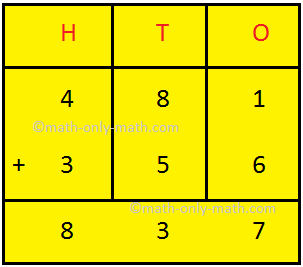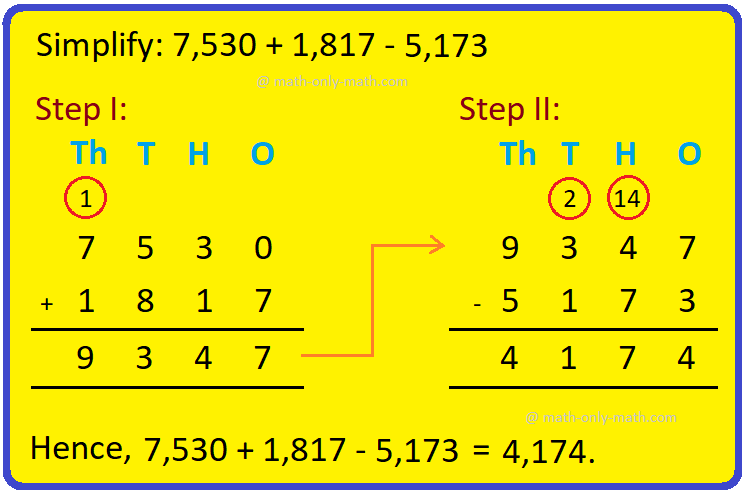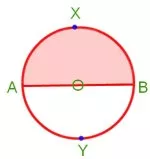Subscribe to our YouTube channel for the latest videos, updates, and tips.
General Form of an Arithmetic Progress
The general form of an Arithmetic Progress is {a, a + d, a + 2d, a + 3d, a + 4d, a + 5d, ..........}, where ‘a’ is known as the first term of the Arithmetic Progress and ‘d’ is known as the common difference (C.D.).
If a is the first term and d is the common difference of an Arithmetic Progress, then its nth term is a + (n - 1)d.
Let a1, a2, a3, a4, ........, an, .................. be the given Arithmetic Progress. Then a1 = first term = a
By the definition, we have
a2 - a1 = d
⇒ a2 = a1 + d
⇒ a2 = a + d
⇒ a2 = (2 - 1)a + d:
a3 - a2 = d
⇒ a3 = a2 + d
⇒ a3 = (a + d) + d
⇒ a3 = a + 2d
⇒ a3 = (3 - 1)a + d:
a4 - a3 = d
⇒ a4 = a3 + d
⇒ a4 = (a + 2d) + d
⇒ a4 = a + 3d
⇒ a4 = (4 - 1)a + d:
a5 - a4 = d
⇒ a5 = a4 + d
⇒ a5 = (a + 3d) + d
⇒ a5 = a + 4d
⇒ a5 = (5 - 1)a + d:
Similarly, a6 = (6 - 1)a + d:
a7 = (7 - 1)a + d:
an = a + (n - 1)d.
Therefore, nth term of an Arithmetic Progress whose first term = ‘a’ and common difference = ‘d’ is an = a + (n - 1)d.
nth term of an Arithmetic Progress from the end:
Let a and d be the first term and common difference of an Arithmetic Progress respectively having m terms.
Then nth term from the end is (m - n + 1)th term from the beginning.
Therefore, nth term of the end = am−n+1 = a + (m - n + 1 - 1)d = a + (m - n)d.
We can also find the general term of an Arithmetic Progress according to the process below.
To find the general term (or the nth term) of the Arithmetic Progress {a, a + d, a + 2d, a + 3d, a + 4d, a + 5d, ..........}.
Clearly, for the Arithmetic Progress is {a, a + d, a + 2d, a + 3d, ..........} we have,
Second term = a + d = a + (2 - 1)d = First term + (2 - 1) × Common Difference.
Third term = a + 2d = a + (3 - 1)d = First term + (3 - 1) × Common Difference.
Fourth term = a + 3d = a + (4 - 1)d = First term + (4 - 1) × Common Difference.
Fifth term = a + 4d = a + (5 - 1)d = First term + (5 - 1) × Common Difference.
Therefore, in general, we have,
nth term = First + (n - 1) × Common Difference = a + (n - 1) × d.
Hence, if the nth term of the Arithmetic Progress {a, a + d, a + 2d, a + 3d, a + 4d, a + 5d, ..........} be denoted by tn, then tn = a + (n - 1) × d.
Solved examples on general form of an Arithmetic Progress
1. Show that the sequence 3, 5, 7, 9, 11, ......... is an Arithmetic Progress. Find its 15th term and the general term.
Solution:
First term of the given sequence = 3
Second term of the given sequence = 5
Third term of the given sequence = 7
Fourth term of the given sequence = 9
Fifth term of the given sequence = 11
Now, Second term - First term = 5 - 3 = 2
Third term - Second term = 7 - 5 = 2
Fourth term - Third term = 9 - 7 = 2
Therefore, the given sequence is an Arithmetic Progress with the common difference 2.
We know that nth term of an Arithmetic Progress, whose first term is a and common difference is d is tn = a + (n - 1) × d.
Therefore, 15th term of the Arithmetic Progress = t15 = 3 + (15 - 1) × 2 = 3 + 14 × 2 = 3 + 28 = 31.
General term = nth term = an = a + (n - 1)d = 3 + (n - 1) × 2 = 3 + 2n - 2 = 2n + 1
2. Which term of the sequence 6, 11, 16, 21, 26, ....... is 126?
Solution:
First term of the given sequence = 6
Second term of the given sequence = 11
Third term of the given sequence = 16
Fourth term of the given sequence = 21
Fifth term of the given sequence = 26
Now, Second term - First term = 11 - 6 = 5
Third term - Second term = 16 - 11 = 5
Fourth term - Third term = 21 - 16 = 5
Therefore, the given sequence is an Arithmetic Progress with the common difference 5.
Let 126 is the nth term of the given sequence. Then,
an = 126
⇒ a + (n - 1)d = 126
⇒ 6 + (n - 1) × 5 = 126
⇒ 6 + 5n - 5 = 126
⇒ 5n + 1 = 126
⇒ 5n = 126 - 1
⇒ 5n = 125
⇒ n = 25
Hence, 25th term of the given sequence is 126.
3. Find the seventeenth term of the Arithmetic Progress {31, 25, 19, 13, ..................... }.
Solution:
The given Arithmetic Progress is {31, 25, 19, 13, ..................... }.
First term of the given sequence = 31
Second term of the given sequence = 25
Third term of the given sequence = 19
Fourth term of the given sequence = 13
Now, Second term - First term = 25 - 31 = -6
Third term - Second term = 19 - 25 = -6
Fourth term - Third term = 13 - 19 = -6
Therefore, common difference of the given sequence = -6.
Thus, the 17th term of the given Arithmetic Progress = a + (n -1)d = 31 + (17 - 1) × (-6) = 31 + 16 × (-6) = 31 - 96 = -65.
Note: Any term of an Arithmetic Progress can be obtained if its first term and common difference are given.
● Arithmetic Progression
- Definition of Arithmetic Progression
- General Form of an Arithmetic Progress
- Arithmetic Mean
- Sum of the First n Terms of an Arithmetic Progression
- Sum of the Cubes of First n Natural Numbers
- Sum of First n Natural Numbers
- Sum of the Squares of First n Natural Numbers
- Properties of Arithmetic Progression
- Selection of Terms in an Arithmetic Progression
- Arithmetic Progression Formulae
- Problems on Arithmetic Progression
- Problems on Sum of 'n' Terms of Arithmetic Progression
From General Form of an Arithmetic Progress to HOME PAGE
Didn't find what you were looking for? Or want to know more information about Math Only Math. Use this Google Search to find what you need.
Recent Articles
-
5th Grade Circle Worksheet | Free Worksheet with Answer |Practice Math
Jul 10, 25 11:41 AM
In 5th Grade Circle Worksheet you will get different types of questions on parts of a circle, relation between radius and diameter, interior of a circle, exterior of a circle and construction of circl… -
Construction of a Circle | Working Rules | Step-by-step Explanation |
Jul 09, 25 01:29 AM
Construction of a Circle when the length of its Radius is given. Working Rules | Step I: Open the compass such that its pointer be put on initial point (i.e. O) of ruler / scale and the pencil-end be… -
Combination of Addition and Subtraction | Mixed Addition & Subtraction
Jul 08, 25 02:32 PM
We will discuss here about the combination of addition and subtraction. The rules which can be used to solve the sums involving addition (+) and subtraction (-) together are: I: First add -
Addition & Subtraction Together |Combination of addition & subtraction
Jul 08, 25 02:23 PM
We will solve the different types of problems involving addition and subtraction together. To show the problem involving both addition and subtraction, we first group all the numbers with ‘+’ and… -
5th Grade Circle | Radius, Interior and Exterior of a Circle|Worksheet
Jul 08, 25 09:55 AM
A circle is the set of all those point in a plane whose distance from a fixed point remains constant. The fixed point is called the centre of the circle and the constant distance is known






New! Comments
Have your say about what you just read! Leave me a comment in the box below. Ask a Question or Answer a Question.